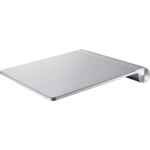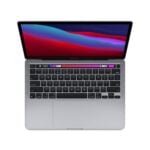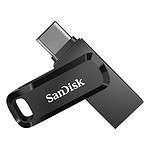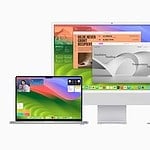Whether you’re writing code for mobile apps, compiling massive C++ projects, or training machine learning models, the right laptop can make a world of difference. In 2025, programming laptops are no longer just about CPU and RAM—they now include AI-enhanced performance, battery optimization, and workstation-level portability. Here’s a breakdown of the most compelling options available today.
What’s New: AI-Driven Performance and Developer-Centric Workstations
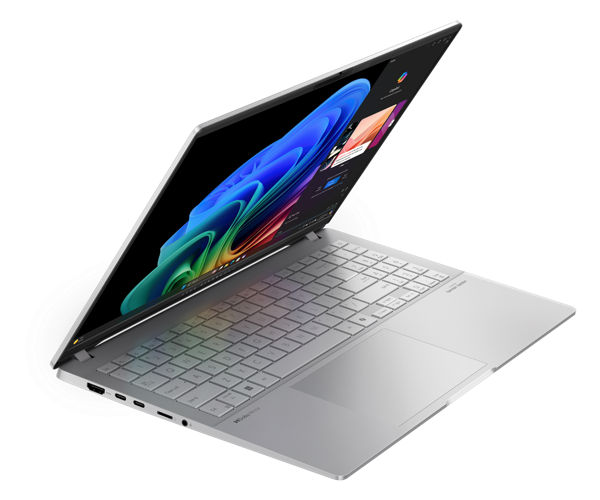
1. Asus Vivobook S Series (2025 Refresh)
Asus has launched four AI-powered Vivobook S models designed for modern users who need slim, ultra-portable performance. These laptops include Intel Core Ultra processors with built-in NPUs (Neural Processing Units), which offload AI tasks and improve battery life. While they’re not exclusive to devs, they’re ideal for coding on the go, especially for students or front-end developers who prioritize mobility and battery life.
2. HP ZBook Fury G1i and Ultra G1a
HP’s new ZBook line is a powerhouse aimed at developers working in AI, data science, or high-end software engineering. The 18-inch ZBook Fury offers more screen real estate than most competitors and features up to Intel Xeon-class CPUs and Nvidia RTX graphics. The ZBook Ultra packs similar capabilities into a more compact 14-inch chassis—perfect for remote engineers working on enterprise-grade tools or large codebases.
Top Programming Laptop Picks of 2025
Apple MacBook Pro 14″ (M4 Pro)
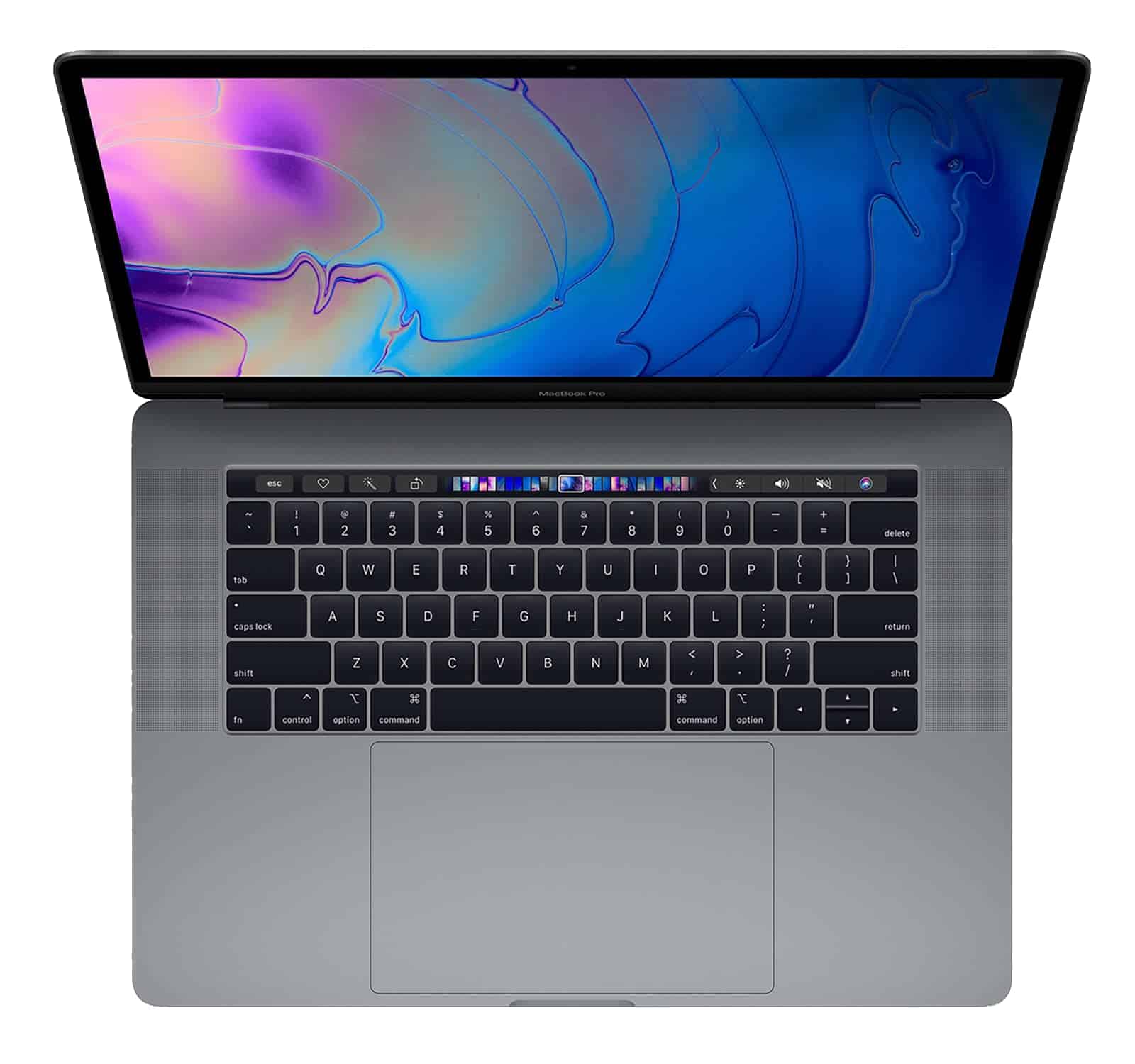
- Why It’s Great: Blazing-fast performance, excellent thermal management, macOS stability, 14.2″ XDR display, and up to 18 hours of battery life.
- Best For: Developers working in iOS/macOS, web development, or needing UNIX-like terminal environments.
- New in 2025: The M4 Pro chip brings improved AI inference speeds and even better GPU handling for developers working in ML or video pipelines.
Apple MacBook Air M4
- Why It’s Great: Lighter, cheaper, but still fast. A fanless design means silent performance, and battery life exceeds 20 hours in light development workloads.
- Best For: Web developers, junior engineers, and remote workers.
Lenovo ThinkPad E16 Gen 2
- Why It’s Great: Rugged durability, legendary keyboard, excellent Linux support, and available with AMD Ryzen 8040 or Intel Core Ultra CPUs.
- Best For: Developers who prefer Linux or dual-boot setups.
Lenovo ThinkPad P1 Gen 7
- Why It’s Great: A true mobile workstation. Ideal for compiling large projects, 3D modeling, or running VMs.
- Best For: Software engineers, CAD developers, and full-stack devs.
MSI Prestige 16 AI Studio
- Why It’s Great: Combines sleek design with serious horsepower. Available with RTX 4070 GPUs and powerful Intel Core Ultra H processors.
- Best For: AI/ML developers, 3D devs, and creative engineers.
Asus Zenbook 14 OLED / Zenbook S14
- Why It’s Great: Thin, light, and beautiful OLED displays. Often equipped with Ryzen 8000 or Intel Core Ultra chips.
- Best For: Travel-heavy devs, digital nomads, or students.
Community-Approved Choices
- MacBook Air (M2/M3): Still a favorite for its price-performance balance and long-term support.
- Asus Zenbook (various models): Widely praised on Reddit and Hacker News for their portability, battery life, and excellent build quality for the price.
- Acer Swift Go 14: Often found on budget lists but punches above its weight with great performance and sleek design.
Quick Buying Recommendations by Use Case
| Scenario | Recommended Laptop(s) |
|---|---|
| Max performance & longevity | MacBook Pro 14 (M4 Pro), MacBook Air M4 |
| Windows/AI dev balance | Lenovo ThinkPad P1 Gen 7, MSI Prestige 16 AI Studio |
| Budget-friendly | ThinkPad E16 Gen 2, Acer Swift Go 14, MacBook Air M2/M3 |
| Ultra-portability | Asus Zenbook 14 OLED, Vivobook S Series |
| Heavy AI/data science | HP ZBook Fury 18″, HP ZBook Ultra 14 |
What to Look for in a Programming Laptop (2025 Edition)
- CPU: Apple M4, Intel Core Ultra, or AMD Ryzen 8040/AI series are ideal.
- RAM: 16 GB is the sweet spot for most dev work; 32 GB+ for ML, Docker, or VMs.
- Storage: SSDs are standard, but get at least 512 GB. 1 TB is ideal for dev environments with multiple projects or Docker images.
- Display: High-resolution (OLED or Retina), 14–16″ with good color accuracy is important for readability.
- Battery Life: Look for 10+ hours real-world usage.
- Keyboard & Build Quality: ThinkPad and MacBooks still lead here.
- Platform Compatibility: macOS for iOS, UNIX devs; Windows for .NET and enterprise; Linux flexibility is best on ThinkPads and Dell XPS.
Final Take
The MacBook Pro 14 with M4 Pro remains the top choice in 2025 for developers who want performance, portability, and battery life in one premium machine. But alternatives like the ThinkPad P1 Gen 7 and MSI Prestige 16 give Windows users powerful, developer-friendly options. Budget-conscious coders should look toward the MacBook Air M4, ThinkPad E16, or Acer Swift Go—and AI-forward users now have a compelling reason to explore HP’s ZBook line.
This is the best year yet for developer laptops, and whether you’re coding in VS Code, Xcode, JetBrains IDEs, or training transformer models, there’s a perfect machine out there for you.
Great Laptops For Programmers
Choosing a laptop for programming can be tough. Many options exist, but not all work well for coding. The right laptop needs enough power, a good screen, and long battery life.
The best laptops for programmers combine fast processors, plenty of RAM, and excellent displays to make coding more efficient and comfortable. Apple MacBook Pro models are highly rated for programming, while ThinkPad laptops are known for their reliability. Your choice should match the type of programming you do and fit your budget.
1) Apple MacBook Pro 14-inch (2024)
The Apple MacBook Pro 14-inch (2024) stands out as the best MacBook for programming today. Its perfect mix of power and portability makes it ideal for coders who need to work in different places.
The latest model comes with the new M4 Pro chip. This processor handles coding tasks, compiling, and running virtual machines without slowing down. Programmers can work on complex projects without frustrating delays.
Memory options start at 24GB, which is enough for most coding needs. This helps when running multiple apps, code editors, and browsers at once. No more waiting for your computer to catch up with your ideas.
The 14-inch screen size hits the sweet spot. It’s big enough to see your code clearly but small enough to carry around. The display shows colors accurately, which helps front-end developers see their work as it will appear to users.
Battery life impresses even when running demanding programming tasks. Coders can work for hours without hunting for an outlet. This makes it perfect for coding at coffee shops or during long meetings.
The keyboard feels comfortable for long typing sessions. Keys respond well and have good travel distance. This matters when you type code all day.
Several tech reviewers agree that it’s the best laptop for programming in 2025. The MacBook Pro handles everything from web development to AI projects with ease.
Port selection has improved over older models. More connections mean fewer dongles to carry around. This small detail makes a big difference in daily use.
The price runs higher than some coding laptops, but the performance and build quality justify the cost for professional programmers who need reliable equipment.
2) Dell Precision 5690
The Dell Precision 5690 stands out as a top choice for programmers who need serious power. It packs impressive performance with Intel Core Ultra processors and up to NVIDIA RTX 5000 graphics, making it ideal for complex coding tasks.
This workstation comes in a compact 16-inch form factor, which is surprisingly small for the amount of power it delivers. Programmers will enjoy the crisp display and comfortable keyboard during long coding sessions.
Battery life is solid, allowing coders to work away from their desks. The haptic touchpad adds a nice touch to the overall user experience, providing good feedback for quick navigation.
For developers working with AI models or graphics-heavy applications, the NVIDIA options make a big difference. The machine handles resource-intensive tasks with ease.
Recent reviews rate it as an excellent workstation laptop, praising its performance for professional tasks. Programmers who compile large codebases or run multiple virtual machines will notice the speed boost.
The laptop runs Windows 11, which supports most development environments and tools programmers need. Port selection is generous, letting users connect multiple monitors and devices without dongles.
Though not the cheapest option, the Dell Precision 5690 offers great value given its specs and build quality. It ranks among the best laptops for programmers in 2025, competing with other high-end machines like the Apple MacBook Pro and MSI Prestige.
3) Lenovo ThinkPad X1 Carbon Gen 11
The ThinkPad X1 Carbon Gen 11 stands out as a top choice for programmers. This ultralight laptop weighs just 2.47 pounds, making it easy to carry between home, office, or coffee shops.
Despite its lightweight design, it doesn’t compromise on power. The laptop comes equipped with up to 13th Gen Intel Core vPro processors that handle multitasking very well. Programmers can run multiple development environments and tools without slowdowns.
The 14-inch screen offers a comfortable viewing experience for long coding sessions. Users can choose models with up to 32GB of RAM, which is plenty for most programming tasks and virtual machines.
Battery life is impressive at up to 12 hours, allowing programmers to work without constantly searching for power outlets. This makes it perfect for coding on the go.
The X1 Carbon features a Communications Bar with an FHD camera or hybrid FHD and infrared options. Video calls with clients or team members look clear and professional.
The keyboard is a highlight for programmers who type all day. ThinkPads are known for their excellent key travel and tactile feedback, reducing finger fatigue during long coding sessions.
Connectivity options are plentiful, with multiple ports for external monitors and devices. No need for a tangle of dongles to connect essential programming tools.
PCMag editors gave it their Editors’ Choice award, calling it “the best business laptop gets better bit by bit.” This praise reflects its reliability for professional use.
The X1 Carbon combines an ultrathin form factor with powerhouse features, making it an excellent tool for programmers who need performance without the bulk.
4) Apple MacBook Pro 16-Inch (2024, M4 Pro)
The 16-inch MacBook Pro with M4 Pro stands as a top choice for programmers who need power and screen space. This laptop packs serious processing power that handles complex coding tasks with ease.
Battery life is a standout feature. Programmers can work all day without charging, a huge benefit for those who code on the go or during long sessions.
The display offers stunning quality for working with code or design elements. Apple has added a fantastic new display option that makes text crisp and colors pop, reducing eye strain during long coding sessions.
Connectivity gets a boost with Thunderbolt 5, allowing programmers to connect multiple external displays and devices at lightning speeds. This matters when setting up complex development environments.
Sound quality shouldn’t be overlooked. The MacBook Pro 16-inch comes with great speakers, helpful when watching tutorials or joining virtual meetings with team members.
The webcam quality is good, an important feature for remote work and collaboration with other developers.
Some programmers debate between the 14-inch and 16-inch models. The 16-inch offers more screen space but less portability. There’s also a choice between storage options, with a £400 price difference between the 512GB and 1TB variants.
The M4 Pro chip runs cool and quiet even under heavy workloads, letting programmers focus without distracting fan noise. Its memory handling is excellent for running multiple programming environments at once.
5) MSI Prestige 16 AI Evo
The MSI Prestige 16 AI Evo stands out as a top choice for programmers who need both power and portability. This laptop comes equipped with the latest Intel Core Ultra processors, making it perfect for handling coding tasks and development work.
Battery life is a major strength for the Prestige 16. It offers over 15 hours of runtime on a single charge, letting programmers work all day without hunting for power outlets. This makes it great for coding on the go or during long meetings.
The laptop features up to an Intel Core Ultra 9 processor 185H, which easily handles intensive programming tasks. Its processing power helps with fast compile times and smooth multitasking when running multiple development tools.
Display quality matters for long coding sessions, and the Prestige 16 delivers with a brilliant screen. The slim body keeps it lightweight enough to carry between home and office without strain.
The Intel Evo certification ensures the laptop meets high standards for performance and efficiency. Programmers will appreciate the quick wake-from-sleep and instant responsiveness when switching between tasks.
Price point is reasonable at $1,449 for the features offered. This makes it a good value option compared to other high-end development machines.
Linux compatibility is important for many programmers. Users have reported success running Arch Linux on this model, suggesting good support for Linux-based development environments.
6) Lenovo ThinkPad E14 Gen 5
The Lenovo ThinkPad E14 Gen 5 stands out as a solid choice for programmers on a budget. This 14-inch laptop offers a good mix of performance and durability without breaking the bank.
Available in both Intel and AMD versions, the E14 Gen 5 provides options for different needs. Many programmers may prefer the AMD model for its better value and performance.
Battery life is a key strength of this ThinkPad. Programmers can work for hours without hunting for a power outlet, making it perfect for coding on the go.
The laptop meets MIL-STD 810H standards for durability. It passes over 200 quality checks, so it can handle the daily wear and tear of a programmer’s life.
A big plus is the inclusion of Thunderbolt 4 on the Intel models. This gives programmers fast data transfer speeds and flexible connectivity options for external displays and devices.
The keyboard follows ThinkPad’s trusted design. Coders will enjoy the comfortable typing experience during long coding sessions.
While the processor upgrade from previous generations is small, the overall package makes the E14 Gen 5 a great value option for programming. It balances cost with the features most coders need.
For programmers who need a reliable workhorse without premium pricing, the ThinkPad E14 Gen 5 delivers the basics done right.
7) Asus ROG Zephyrus G14
The Asus ROG Zephyrus G14 stands out as a powerful option for programmers who need performance in a compact package. This laptop combines high-end specs with portability, making it ideal for coding on the go.
Programmers will appreciate its AMD Ryzen 9 processor with up to 8 cores, which handles multiple IDEs with ease. Users report running several programming environments simultaneously without performance issues, even when using demanding software like Android Studio.
The G14’s NVIDIA GeForce RTX graphics card provides extra computing power for resource-intensive tasks. This makes it suitable for game development, with enough power to run tools like Unreal Engine 4 and Unity.
Battery life exceeds what you’d expect from a gaming laptop. The 2024 model features a beefy battery that lets programmers work unplugged for extended periods.
The newest version includes the first-ever OLED display with NVIDIA G-SYNC in a laptop. This means crisp text and smooth visuals, reducing eye strain during long coding sessions.
Build quality rivals premium ultrabooks, with a slim profile that belies its processing power. At just over 3 pounds, it’s lighter than many programming laptops with similar specs.
The keyboard offers good key travel and feedback, important for typing code all day. The trackpad is responsive and accurately registers gestures and clicks.
8) HP Spectre x360 14
The HP Spectre x360 14 stands out as a top choice for programmers who need a mix of power and flexibility. With its 2-in-1 design, this laptop lets you work in different ways based on your needs.
The keyboard is excellent for coding, giving programmers the comfort they need during long coding sessions. The screen ratio and resolution provide plenty of space to see your code clearly.
Processing power isn’t an issue with the Spectre x360 14. It comes with up to an Intel Core Ultra 7 155H processor that can reach speeds up to 4.8 GHz. This means faster compile times and smoother performance when running multiple programming tools.
Memory and storage options are generous. Programmers can get up to 32GB of RAM and 2TB of SSD storage, which is plenty for most development work including running virtual machines or containers.
The laptop runs Windows 11, making it compatible with most development environments and tools right out of the box. This saves time setting up your programming workspace.
Battery life is strong, allowing coders to work for extended periods without hunting for an outlet. This makes it good for programming on the go or in coffee shops.
The Spectre x360 14 also shines for remote work. It has an excellent webcam and great audio features, which helps during team meetings and pair programming sessions.
At just over 3 pounds, it’s light enough to carry around easily. This makes it a good fit for programmers who move between home, office, and other workspaces.
Windows developers in particular may find this laptop a great choice due to its smooth integration with Microsoft’s development tools.
9) Razer Blade 15 Advanced
The Razer Blade 15 Advanced stands out as a powerful option for programmers who need serious computing power. This laptop combines high performance with a sleek design that many developers appreciate.
The laptop comes with RTX 3000 series GPUs paired with Intel’s 10th Gen processors. This combination gives programmers plenty of power for compiling code, running virtual machines, or even AI development work.
Screen quality on the Blade 15 Advanced is impressive. It features a faster display that makes text clear and reduces eye strain during long coding sessions.
Many programmers choose this laptop because it balances work and play effectively. While it handles programming tasks with ease, it’s also extremely powerful for gaming when you need a break.
The Blade 15 has expanded connectivity options with plenty of ports. This means less hassle when connecting external monitors, drives, or other devices needed for development work.
Computer Science students have found the Blade 15 works well as an everyday driver for coursework. The power and portability make it suitable for both classroom and dorm use.
Some developers have compared it to the MacBook Pro. While some switched back to MacBooks, others prefer the Windows environment and hardware flexibility of the Razer.
Build quality is another strong point. The aluminum chassis feels solid and durable, important for a device that will see daily use for several years.
Heat management is good for a laptop with this much power, though it can get warm during intense tasks. The cooling system handles extended programming sessions well.
10) Microsoft Surface Laptop Studio
The Microsoft Surface Laptop Studio is a powerful choice for programmers who need both performance and flexibility. It comes with 11th Gen Intel Core i5 or i7 processors that keep coding programs running smoothly.
Memory options are impressive, with up to 32GB RAM in the original model and up to 64GB in the newer Surface Laptop Studio 2. This lets you run multiple powerful programs at once without freezing or slowdowns.
What makes this laptop stand out is its unique 2-in-1 design. Programmers can use it as a standard laptop for coding or flip the screen to use it in studio mode for presentations or design work.
Many developers praise its performance for programming tasks. One user mentioned it’s an amazing laptop for programming, noting that while not the most powerful option available, it handles coding tasks very well.
The 14.4-inch touchscreen provides ample space for coding while maintaining portability. This balance makes it suitable for programmers who work in different locations.
Battery life is solid for all-day coding sessions. This means programmers can work without constantly searching for power outlets.
The Surface Laptop Studio also offers comfort for long coding sessions. Its keyboard has good key travel and spacing, which helps reduce typing fatigue during marathon programming sessions.
Port selection includes Thunderbolt 4 connections, allowing programmers to connect to external displays and peripherals. This expandability is valuable when setting up a more permanent workstation.
Key Features for Programming Laptops
When choosing a laptop for programming, certain hardware specs matter more than others. Your coding efficiency depends on having the right balance of processing power, memory, and display quality.
Processor Performance
The CPU is the brain of your programming laptop. For most coding tasks, aim for at least an Intel Core i5 or AMD Ryzen 5 processor from recent generations.
High-end development work benefits from more powerful options like Intel Core i7/i9 or AMD Ryzen 7/9 processors. The number of cores matters – more cores mean better multitasking when running multiple development environments.
Clock speed (measured in GHz) affects how quickly your code compiles. Many programming laptops now feature processors with 4.0+ GHz boost speeds, which help with faster compile times.
Consider the processor generation too. Newer chips (12th gen Intel or Ryzen 6000+ series) offer better power efficiency, which means longer battery life when coding away from power outlets.
RAM and Storage
RAM is crucial for programming tasks. For basic coding, 8GB is the bare minimum, but 16GB is now the sweet spot for most developers.
If you work with virtual machines, containers, or large datasets, consider 32GB or more. Web developers running multiple browser instances, database servers, and code editors will notice smoother performance with more RAM.
For storage, SSDs are non-negotiable for programmers. They provide faster boot times and quicker file access compared to traditional hard drives. Look for NVMe SSDs for the best performance.
Storage capacity depends on your needs. Most coding laptops come with at least 512GB, but if you work with large frameworks or game development, 1TB or more is better. Many laptops now offer upgradeable storage options too.
Graphics Capabilities
While not as critical as CPU or RAM, graphics capabilities matter for specific programming tasks. Most general coding can be handled by integrated graphics like Intel Iris Xe or AMD Radeon.
For game development, 3D modeling, or machine learning tasks, a dedicated GPU becomes important. NVIDIA GTX or RTX series cards provide the necessary power for these specialized tasks.
Consider display quality alongside graphics power. Many programmers prefer higher resolution screens (1440p or 4K) for more screen real estate to view code. A color-accurate display helps for web or mobile app development.
Multiple monitor support is worth checking too. Most programming laptops should support at least one external display through HDMI, DisplayPort, or USB-C/Thunderbolt connections.
Operating Systems for Programmers
Programmers need to choose an operating system that fits their specific coding requirements. Each major OS offers different advantages for development work, with varying levels of software support, terminal capabilities, and hardware compatibility.
Windows
Windows remains a popular choice for many programmers due to its widespread use and software compatibility. Microsoft’s developer tools like Visual Studio provide excellent support for C#, .NET, and other Microsoft technologies.
Windows Subsystem for Linux (WSL) has been a game-changer, allowing developers to run Linux tools directly on Windows. This feature bridges the gap between Windows convenience and Linux power.
For game developers, Windows offers unmatched compatibility with tools like Unity and Unreal Engine. DirectX support makes it the preferred platform for PC game development.
PowerShell provides a powerful command-line experience, though many developers still find it less intuitive than Linux shells.
Hardware support is extremely broad, with many top programming laptops running Windows. You can choose from countless laptop options at various price points.
macOS
Apple’s macOS has become increasingly popular among programmers, especially for web and mobile development. The Unix-based system offers a developer-friendly environment with an elegant user interface.
The Apple MacBook Pro is consistently rated as one of the best laptops for programming tasks. The M-series chips deliver exceptional performance and battery life.
Terminal access provides a powerful command-line experience similar to Linux. Package managers like Homebrew make software installation straightforward.
For iOS and macOS app development, Xcode is mandatory and only available on Mac systems. Web developers appreciate the consistent rendering in Safari for testing purposes.
The UNIX foundation makes it easy to run most open-source development tools and languages. Python, Ruby, and Node.js work exceptionally well on macOS.
One downside is the premium price point of Mac hardware, though many developers find the build quality and performance justify the cost.
Linux
Linux stands as the most customizable and open operating system for programming tasks. It offers unparalleled freedom and control over your development environment.
Popular distributions like Ubuntu and Debian provide user-friendly experiences while maintaining powerful capabilities. More advanced users might prefer Arch or Fedora for newer packages.
The package management systems (apt, yum, pacman) make installing development tools quick and straightforward. Most programming languages and frameworks have first-class support on Linux.
Terminal operations are typically more intuitive and powerful compared to other operating systems. Bash, Zsh, and Fish shells offer robust scripting capabilities.
Linux runs efficiently on older hardware, making it ideal for budget-conscious programmers. Many developers use Linux on affordable laptops like the Lenovo ThinkPad series.
For server-side development, Linux provides the same environment used in production, eliminating deployment surprises. Docker and containerization technologies work exceptionally well on Linux systems.
Frequently Asked Questions
Programming laptops need specific features for optimal performance. These questions cover key specs, popular models, and options for different budgets and needs.
What are the recommended specs for a coding laptop?
A good programming laptop should have at least 16GB of RAM to handle multiple applications and development environments. 32GB is even better for more demanding tasks like mobile app development or running virtual machines.
Storage should be SSD-based with at least 512GB capacity. SSDs offer faster boot times and quicker file access than traditional hard drives.
Processors matter too. Look for recent Intel Core i5/i7 or AMD Ryzen 5/7 chips. For Apple users, the M4 chips provide seriously powerful performance for smooth coding experiences.
Battery life of 8+ hours helps when coding away from power outlets.
Which laptop models are highly preferred by professional programmers?
The Apple MacBook Pro ranks consistently high among professional developers due to its performance and build quality. The 14-inch and 16-inch models with M4 chips are particularly praised.
Lenovo ThinkPads are widely loved by programmers, especially the X1 Carbon series. They offer excellent keyboards, strong build quality, and good Linux compatibility.
Dell XPS and Precision models are popular Windows alternatives with great displays and performance. The Dell Precision 5690 is a top choice for those needing workstation-level power.
For those wanting something different, the MSI Prestige 16 AI Evo offers strong performance in a sleek package.
How important is a dedicated GPU for programming and gaming-oriented laptops?
For most programming tasks, a dedicated GPU isn’t necessary. Integrated graphics from Intel, AMD, or Apple work fine for web development, backend coding, and most software development.
However, certain programming fields benefit from a dedicated GPU. Machine learning, game development, 3D rendering, and AR/VR work all use GPU acceleration.
If you’re a programmer who also games, a dedicated GPU makes sense. Laptops with NVIDIA RTX or AMD Radeon graphics will handle both your coding and gaming needs.
What features should a student look for in a laptop for programming?
Students should prioritize portability and battery life. A laptop under 4 pounds with 8+ hours of battery life makes moving between classes and studying in libraries much easier.
Keyboard quality matters for long coding sessions. Look for comfortable key travel and layout.
A minimum of 8GB RAM (preferably 16GB) and at least 256GB SSD storage will handle most student programming tasks. Many computer science courses use virtual machines, so more RAM helps.
Durability counts too. Students’ laptops face more physical stress, so models with good build quality like ThinkPads or MacBooks are smart investments.
Can you suggest budget-friendly laptops that are suitable for programming?
The Asus Vivobook series offers great value for programmers on a budget. They typically include solid specs at lower price points than premium models.
Lenovo’s ThinkPad E or L series provides the ThinkPad reliability at more affordable prices. The T14s is also a quality option that’s less expensive than the Carbon series.
For Apple fans, the MacBook Air with M2 or M3 chips offers excellent performance at a lower price than Pro models.
Used or refurbished business laptops from enterprise brands often provide great value. A 1-2 year old ThinkPad or Dell Latitude can be an excellent budget option.
Is it necessary to have a Windows laptop for programming or are there other viable options?
Windows isn’t necessary for most programming. MacOS is extremely popular among developers, offering a Unix-based environment with excellent hardware integration.
Linux is a fantastic option that runs well on many laptops. Ubuntu and other distributions provide great development environments and are free.
Many professional developers prefer MacOS or Linux because their Unix-based systems more closely match production server environments.
The best choice depends on your specific needs. Web developers can work on any platform. Game developers might prefer Windows. iOS developers need MacOS.



